Abstract
After 20 years' experience throughout the Western world the effectiveness of screening newborns for congenital dislocation of the hip remains controversial. Is the clinical test for hip instability (the Ortolani or "jump" sing) reliable? Are other equally important physical signs frequently missed by inexperienced examiners? Do some dislocations develop after the newborn period when no abnormality was identifiable during the first week of life? In Vancouver, screening for this condition was initiated in 1964. In the 5-year period 1967-1971 an orthopedic surgeon screened all the infants in the newborn nursery of one hospital, while orthopedic residents screened all those at another hospital. Their rates of neonatal and late (after the first month of lfe) diagnosis of congenital hip abnormalities were, respectively, 6 and 0.3/100 lives births for the surgeon and 5 and 0.8/1000 for the residents. In contrast, at 20 hospitals that did not have regular screenign the average rates were 1.2 and 1.4. Systematic screening the early treatment have great potential for reducing the need for immobilization and surgical treatment of infants who congenital dislocation of the hip is missed in the first month of life. it may also prevent the arthritic sequelae that in adult life afflict many patients whose treatment was begun after the newborn period.
Full text
PDF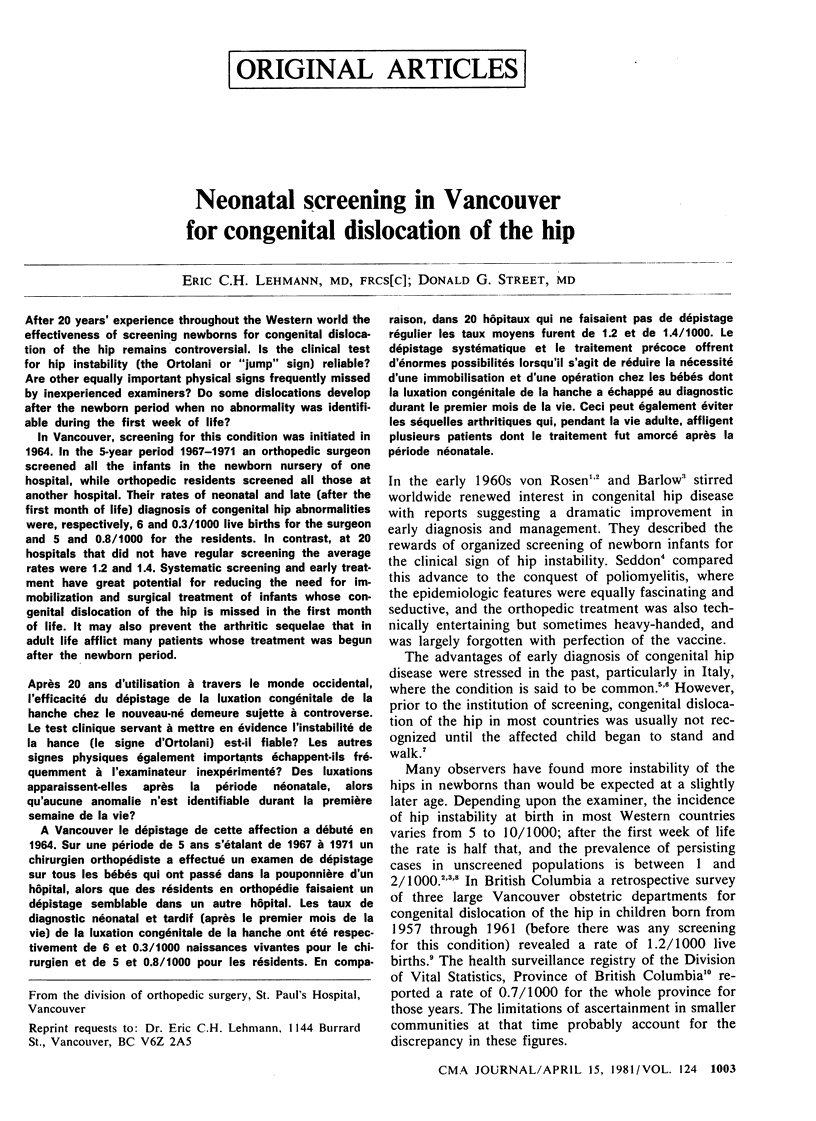
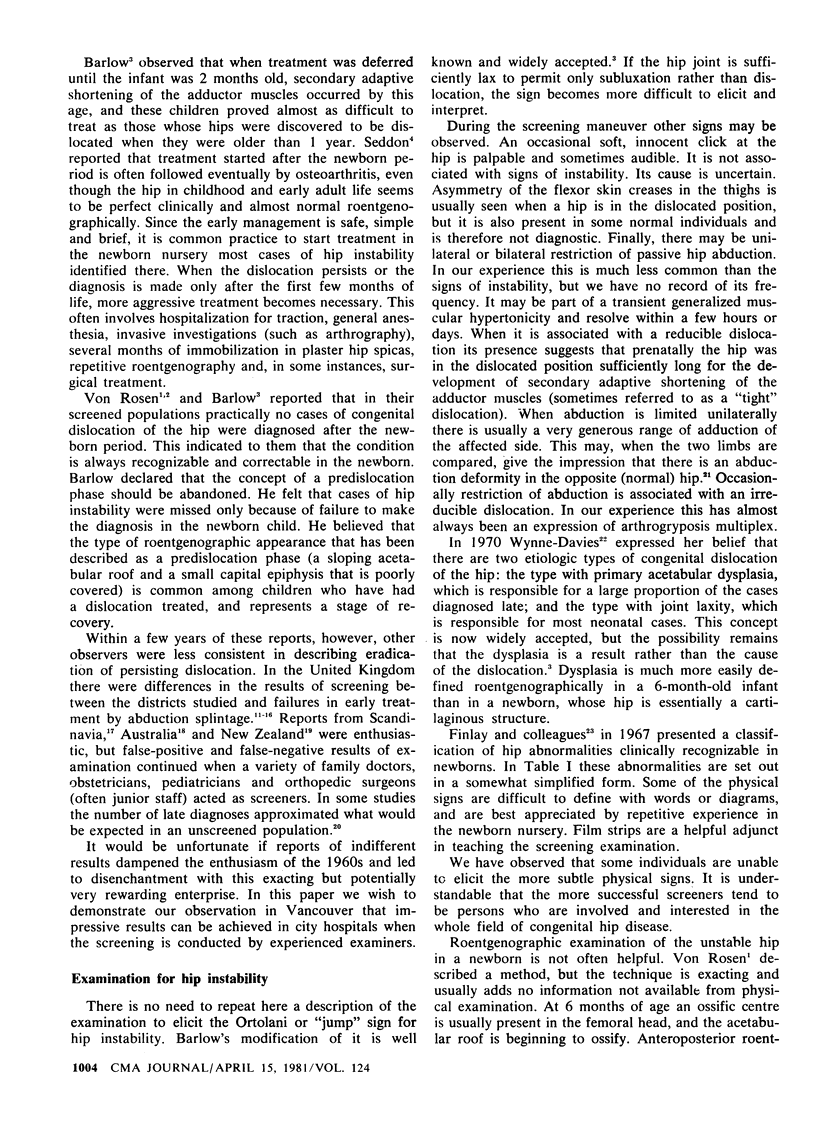
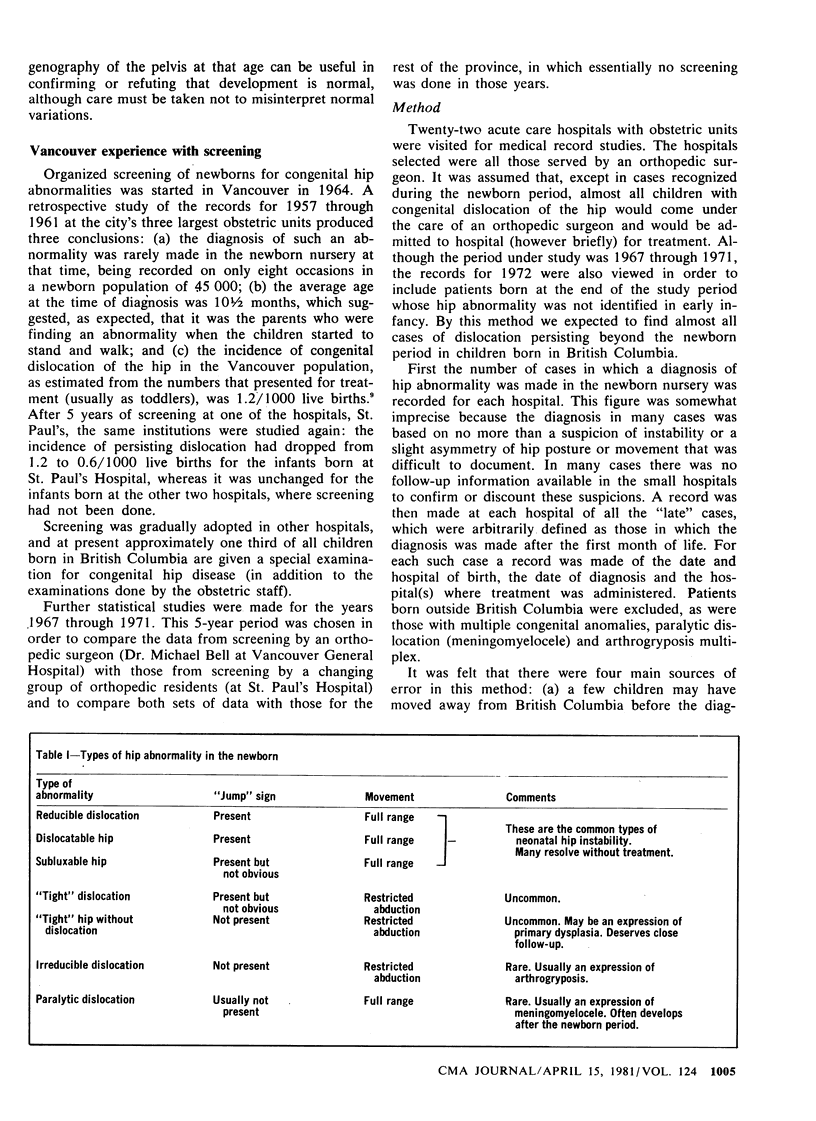
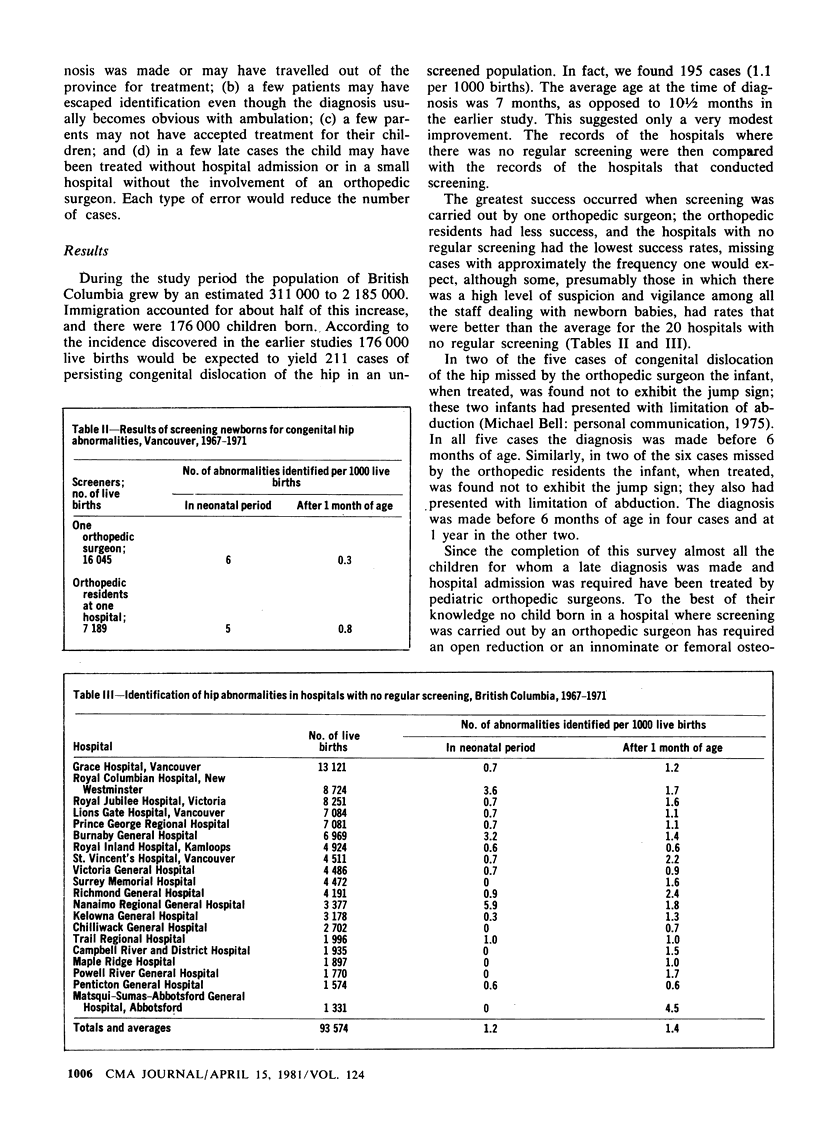
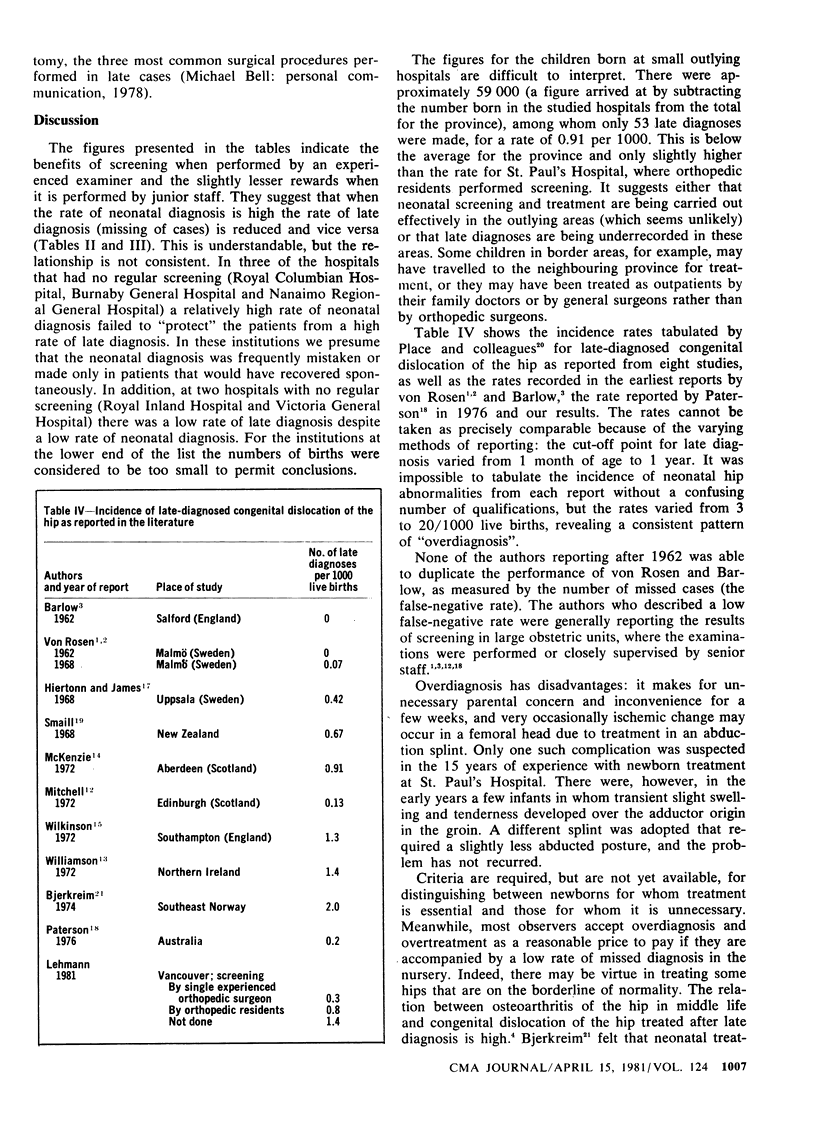
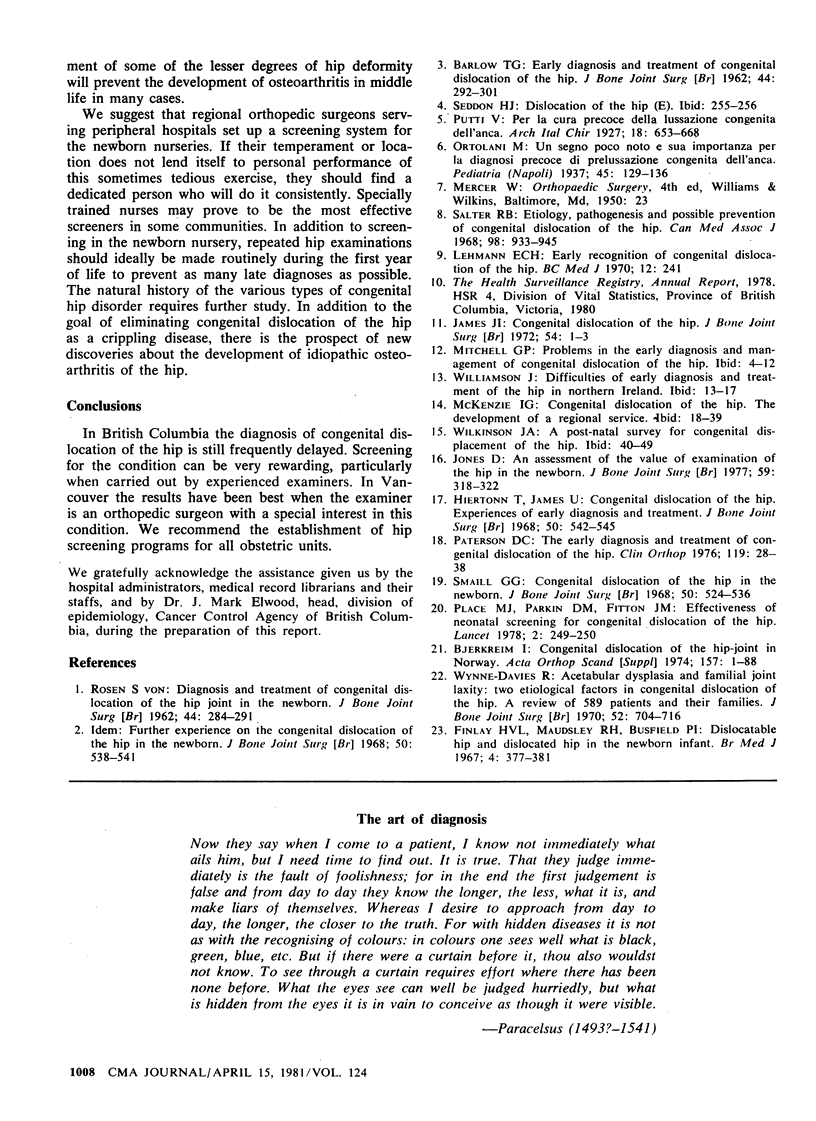
Selected References
These references are in PubMed. This may not be the complete list of references from this article.
- Finlay H. V., Maudsley R. H., Busfield P. I. Dislocatable hip and dislocated hip in the newborn infant. Br Med J. 1967 Nov 18;4(5576):377–381. doi: 10.1136/bmj.4.5576.377. [DOI] [PMC free article] [PubMed] [Google Scholar]
- Hiertonn T., James U. Congenital dislocation of the hip. Experiences of early diagnosis and treatment. J Bone Joint Surg Br. 1968 Aug;50(3):542–545. [PubMed] [Google Scholar]
- Jones D. An assessment of the value of examination of the hip in the newborn. J Bone Joint Surg Br. 1977 Aug;59(3):318–322. doi: 10.1302/0301-620X.59B3.893510. [DOI] [PubMed] [Google Scholar]
- Paterson D. C. The early diagnosis and treatment of congenital dislocation of the hip. Clin Orthop Relat Res. 1976 Sep;(119):28–38. [PubMed] [Google Scholar]
- Place M. J., Parkin D. M., Fritton J. M. Effectiveness of neonatal screening for congenital dislocation of the hip. Lancet. 1978 Jul 29;2(8083):249–250. doi: 10.1016/s0140-6736(78)91758-0. [DOI] [PubMed] [Google Scholar]
- Salter R. B. Etiology, pathogenesis and possible prevention of congenital dislocation of the hip. Can Med Assoc J. 1968 May 18;98(20):933–945. [PMC free article] [PubMed] [Google Scholar]
- Smaill G. B. Congenital dislocation of the hip in the newborn. J Bone Joint Surg Br. 1968 Aug;50(3):525–536. [PubMed] [Google Scholar]
- Wynne-Davies R. Acetabular dysplasia and familial joint laxity: two etiological factors in congenital dislocation of the hip. A review of 589 patients and their families. J Bone Joint Surg Br. 1970 Nov;52(4):704–716. [PubMed] [Google Scholar]
- von ROSEN Diagnosis and treatment of congenital dislocation of the hip hoint in the new-born. J Bone Joint Surg Br. 1962 May;44-B:284–291. doi: 10.1302/0301-620X.44B2.284. [DOI] [PubMed] [Google Scholar]


